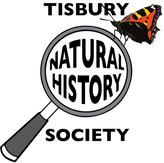|
One feature of midsummer are the bright pink flowers of the willowherbs. More than ten species of this family – the Epilobiums – are found in this country and at least three will be commonly found hereabouts. All have spear-shaped leaves and flowers with four notched petals. Although the individual flowers are quite simple what makes the plants striking is the number of blooms held on each flower spike.
The most notable in this respect is the Rosebay willowherb. This is a tall, patch-forming plant with conical masses of flowers which, when in bloom supplies splashes of magenta pink in the countryside. They are found in dense stands in any open space such as woodland clearings, roadside verges and waste ground. It is a very successful coloniser and spread vigorously as a result of the two World Wars when cleared forests and bomb and fire sites provided ideal conditions for the plant to flourish. Indeed, the plant got the nicknames Fireweed and Bombweed as a result. It is able to achieve this colonisation by virtue of its seeds which are tiny and fitted with a silky plume of hairs which act as a sail to catch the wind. As the long, red, seed pods, each filled with hundreds of seeds, split open, so the seeds are wafted away on the slightest breeze. As each plant can produce tens of thousands of seeds, a stand beside a road or railway, will send out a blizzard of seeds on the slipstream of passing cars and trains. These feather-light seeds can then travel for miles on the breeze. Apparently, Rosebay willowherb has ninety times more vitamin A and four times more vitamin C than oranges and some wild food enthusiasts eat very young shoots and claim it tastes like asparagus. In Russia the plant was fermented to make herbal tea which gained the nickname “Ivan Chai” in Britain. The tallest willowherb found in Britain is the Great willowherb. It prefers damper ground alongside rivers and ditches and is softly hairy. It has fewer flowers than its Rosebay cousin but they just as brightly coloured. Its seeds are just as numerous and easily dispersed. A smaller, common willowherb is the Broad-Leaved which has much smaller paler pink flowers but again generates a profusion of seeds. Without needing to name the species, it is quite easy to spot willowherb seedlings when they crop up in our flowerbeds. By virtue of their extremely successful seed dispersal mechanism, they do this even though the nearest mature plants may be miles away. Fortunately, they are easy to pull up when young, but you need to do so quickly as the creeping root structure means it can spread rapidly and out compete other plants. by Andrew Graham Comments are closed.
|
Photo: Avocets (Izzy Fry)
The headers display photos taken by our members. Do get in touch via the Contact Form if you'd like to submit a photo for selection.
Archives
May 2024
Categories
All
|

 RSS Feed
RSS Feed